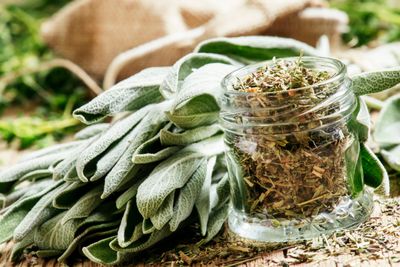About Sage Herbs
Sage is a woody perennial herb that belongs in the same family as mint. For centuries, this fragrant, tasty herb has been used in both the kitchen and the medicine cabinet. Sage leaves are long and narrow, have a pebbly texture, and can range in color from gray-green to purple-green. You can choose to enjoy sage as a pretty garden component or you can harvest and enjoy the leaves’ many uses. In the kitchen, sage goes well with meat and poultry, buttery sauces, pumpkin and squash dishes, and as a fried, crunchy element. Sage as a medicinal herb is thought to be good for digestion and for soothing a sore throat. It makes a nice tea that is supposedly antiseptic. Burning sage in a space is considered to be a way to cleanse negative energies and spirits, but it can also clear out stubborn odors.
When Should I Harvest Sage?
Sage harvesting can be done at almost any time, but you’ll get the best flavor when you pick leaves before the plant blooms. You can extend harvesting by picking off flowers as the buds develop, but it is also possible to harvest as the plants are blooming and after. You can even pluck off a few leaves in winter if you want. Expect it to take 75 days from planting seeds to getting harvestable leaves. It’s not a bad idea to avoid harvesting leaves from sage plants in their first year. This allows the plant to establish good roots and a solid frame. If you do plan to harvest in the first year of growth, do so lightly.
How to Harvest Sage Plants
When picking sage herbs, consider whether you’ll be using them fresh or hanging them to dry. For fresh use, simply pick off leaves as needed. For drying, cut off stems that are at least six to eight inches (15-20 cm.) long. Bundle these together, hang to dry, and store the dried leaves in sealed containers. You can harvest and use both young and mature sage leaves, but keep in mind that the baby leaves will have a better flavor. As you harvest, be sure to leave a few stalks alone so that the plant can recover. Limit fall and winter harvesting to allow plants to get ready to come back strong in the spring. Even if you won’t be using the leaves of your sage plants, harvest and prune each year to reinvigorate them. Pruning off leaves and stems can help maintain a good shape and prevent the need to replace plants every few years. Without occasional trimming, sage can become very woody and shrubby.
